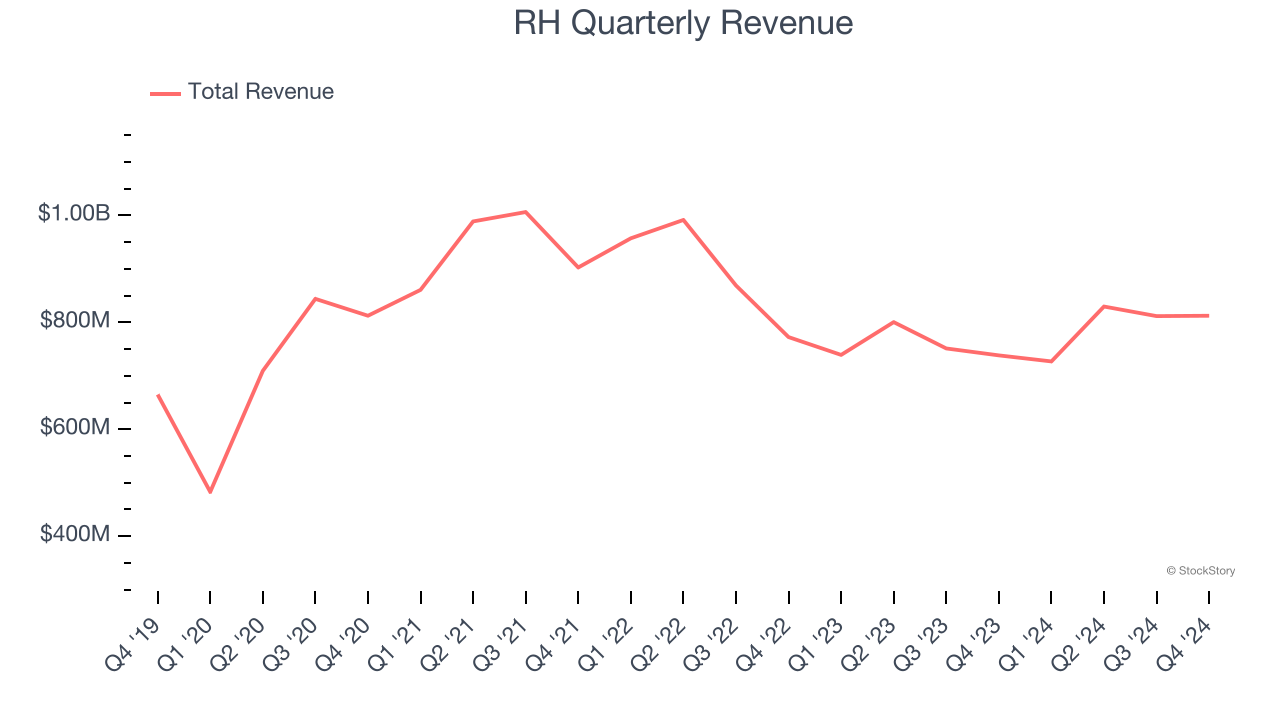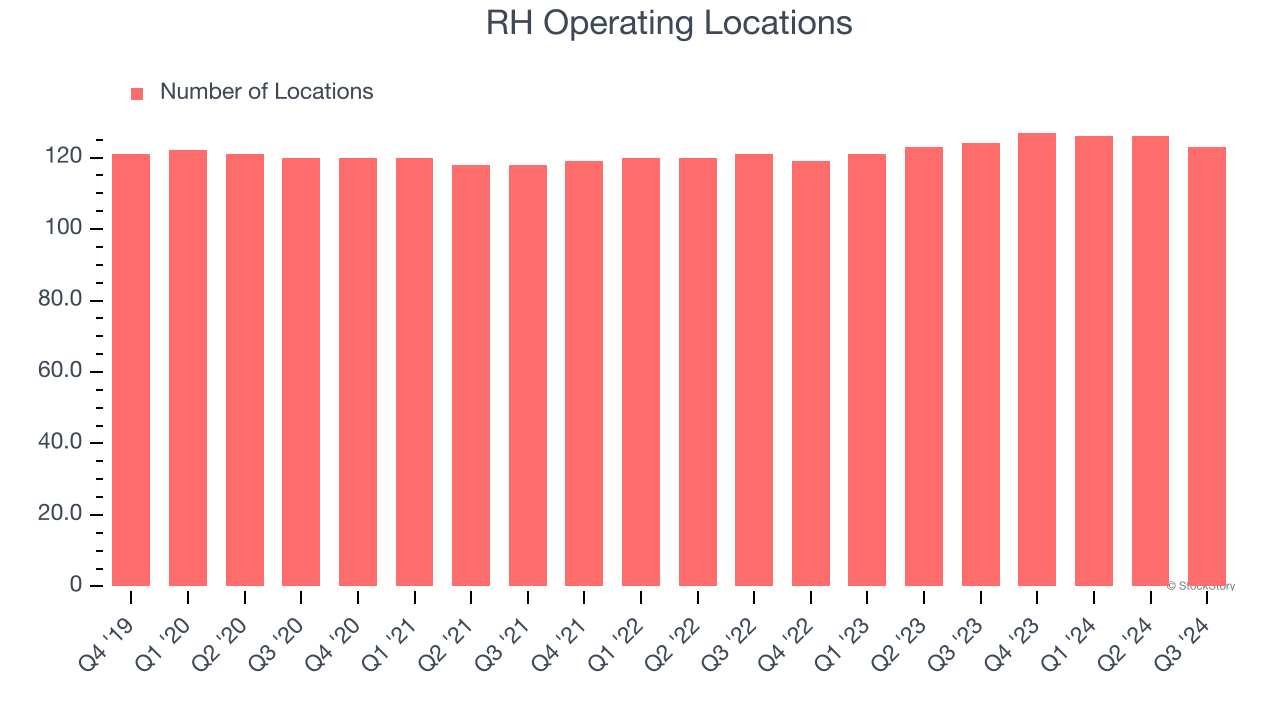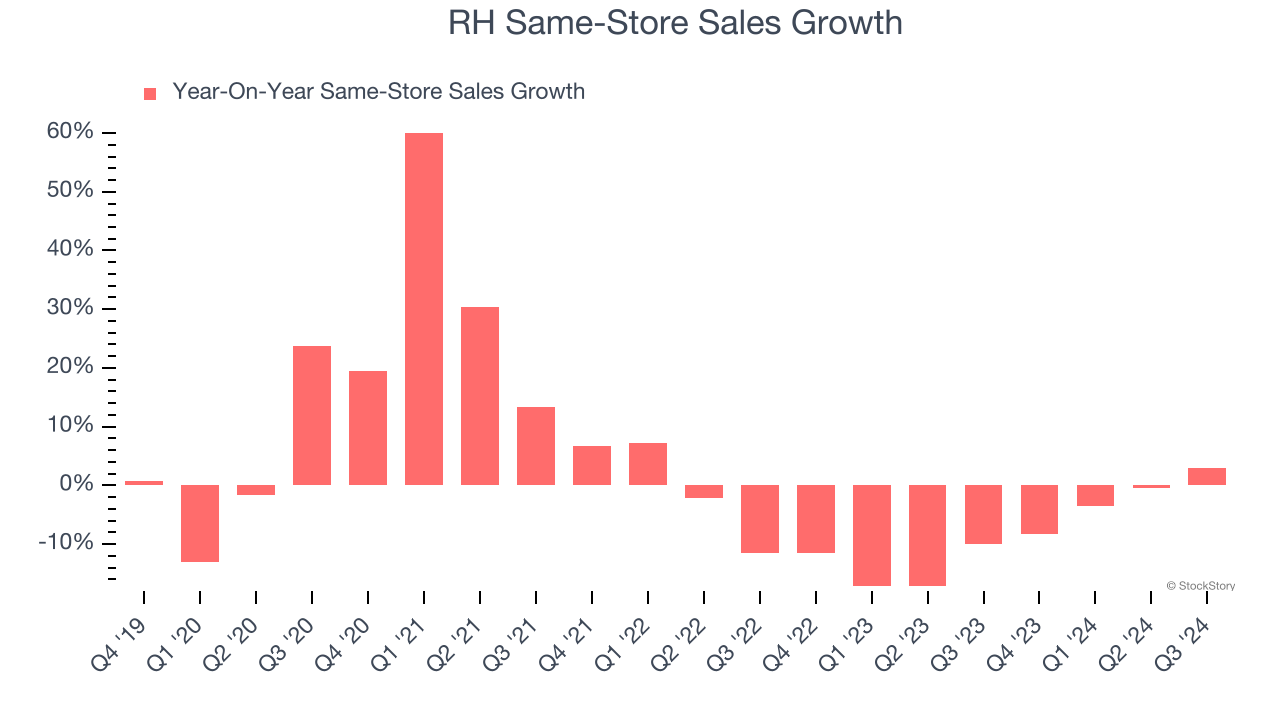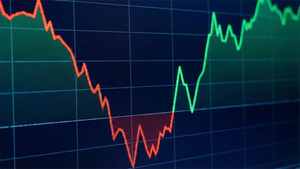
Luxury furniture retailer RH (NYSE: RH) missed Wall Street’s revenue expectations in Q4 CY2024, but sales rose 10% year on year to $812.4 million. Next quarter’s revenue guidance of $810.6 million underwhelmed, coming in 2.8% below analysts’ estimates. Its non-GAAP profit of $1.58 per share was 17.2% below analysts’ consensus estimates.
Is now the time to buy RH? Find out by accessing our full research report, it’s free.
RH (RH) Q4 CY2024 Highlights:
- Revenue: $812.4 million vs analyst estimates of $833.7 million (10% year-on-year growth, 2.6% miss)
- Adjusted EPS: $1.58 vs analyst expectations of $1.91 (17.2% miss)
- Adjusted EBITDA: $138.8 million vs analyst estimates of $153.9 million (17.1% margin, 9.8% miss)
- Revenue Guidance for Q1 CY2025 is $810.6 million at the midpoint, below analyst estimates of $833.8 million
- Operating Margin: 8.7%, in line with the same quarter last year
- Free Cash Flow was -$69.67 million compared to -$251.5 million in the same quarter last year
- Market Capitalization: $4.45 billion
Company Overview
Formerly known as Restoration Hardware, RH (NYSE: RH) is a specialty retailer that exclusively sells its own brand of high-end furniture and home decor.
Home Furniture Retailer
Furniture retailers understand that ‘home is where the heart is’ but that no home is complete without that comfy sofa to kick back on or a dreamy bed to rest in. These stores focus on providing not only what is practically needed in a house but also aesthetics, style, and charm in the form of tables, lamps, and mirrors. Decades ago, it was thought that furniture would resist e-commerce because of the logistical challenges of shipping large furniture, but now you can buy a mattress online and get it in a box a few days later; so just like other retailers, furniture stores need to adapt to new realities and consumer behaviors.
Sales Growth
A company’s long-term sales performance is one signal of its overall quality. Even a bad business can shine for one or two quarters, but a top-tier one grows for years.
With $3.18 billion in revenue over the past 12 months, RH is a small retailer, which sometimes brings disadvantages compared to larger competitors benefiting from economies of scale and negotiating leverage with suppliers.
As you can see below, RH grew its sales at a sluggish 3.7% compounded annual growth rate over the last five years (we compare to 2019 to normalize for COVID-19 impacts).

This quarter, RH’s revenue grew by 10% year on year to $812.4 million but fell short of Wall Street’s estimates. Company management is currently guiding for a 11.5% year-on-year increase in sales next quarter.
Looking further ahead, sell-side analysts expect revenue to grow 14.5% over the next 12 months, an acceleration versus the last five years. This projection is eye-popping and suggests its newer products will fuel better top-line performance.
Today’s young investors won’t have read the timeless lessons in Gorilla Game: Picking Winners In High Technology because it was written more than 20 years ago when Microsoft and Apple were first establishing their supremacy. But if we apply the same principles, then enterprise software stocks leveraging their own generative AI capabilities may well be the Gorillas of the future. So, in that spirit, we are excited to present our Special Free Report on a profitable, fast-growing enterprise software stock that is already riding the automation wave and looking to catch the generative AI next.
Store Performance
Number of Stores
The number of stores a retailer operates is a critical driver of how quickly company-level sales can grow.
Over the last two years, RH opened new stores quickly, averaging 2.6% annual growth. This was faster than the broader consumer retail sector.
When a retailer opens new stores, it usually means it’s investing for growth because demand is greater than supply, especially in areas where consumers may not have a store within reasonable driving distance.
Note that RH reports its store count intermittently, so some data points are missing in the chart below.

Same-Store Sales
A company's store base only paints one part of the picture. When demand is high, it makes sense to open more. But when demand is low, it’s prudent to close some locations and use the money in other ways. Same-store sales gives us insight into this topic because it measures organic growth for a retailer's e-commerce platform and brick-and-mortar shops that have existed for at least a year.
RH’s demand has been shrinking over the last two years as its same-store sales have averaged 7.7% annual declines. This performance is concerning - it shows RH artificially boosts its revenue by building new stores. We’d like to see a company’s same-store sales rise before it takes on the costly, capital-intensive endeavor of expanding its store base.
Note that RH reports its same-store sales intermittently, so some data points are missing in the chart below.

Key Takeaways from RH’s Q4 Results
We struggled to find many positives this quarter as RH missed across all key metrics. Its revenue guidance for next quarter also fell short. Overall, this quarter could have been better. The stock traded down 26% to $184.99 immediately after reporting.
The latest quarter from RH’s wasn’t that good. One earnings report doesn’t define a company’s quality, though, so let’s explore whether the stock is a buy at the current price. When making that decision, it’s important to consider its valuation, business qualities, as well as what has happened in the latest quarter. We cover that in our actionable full research report which you can read here, it’s free.




